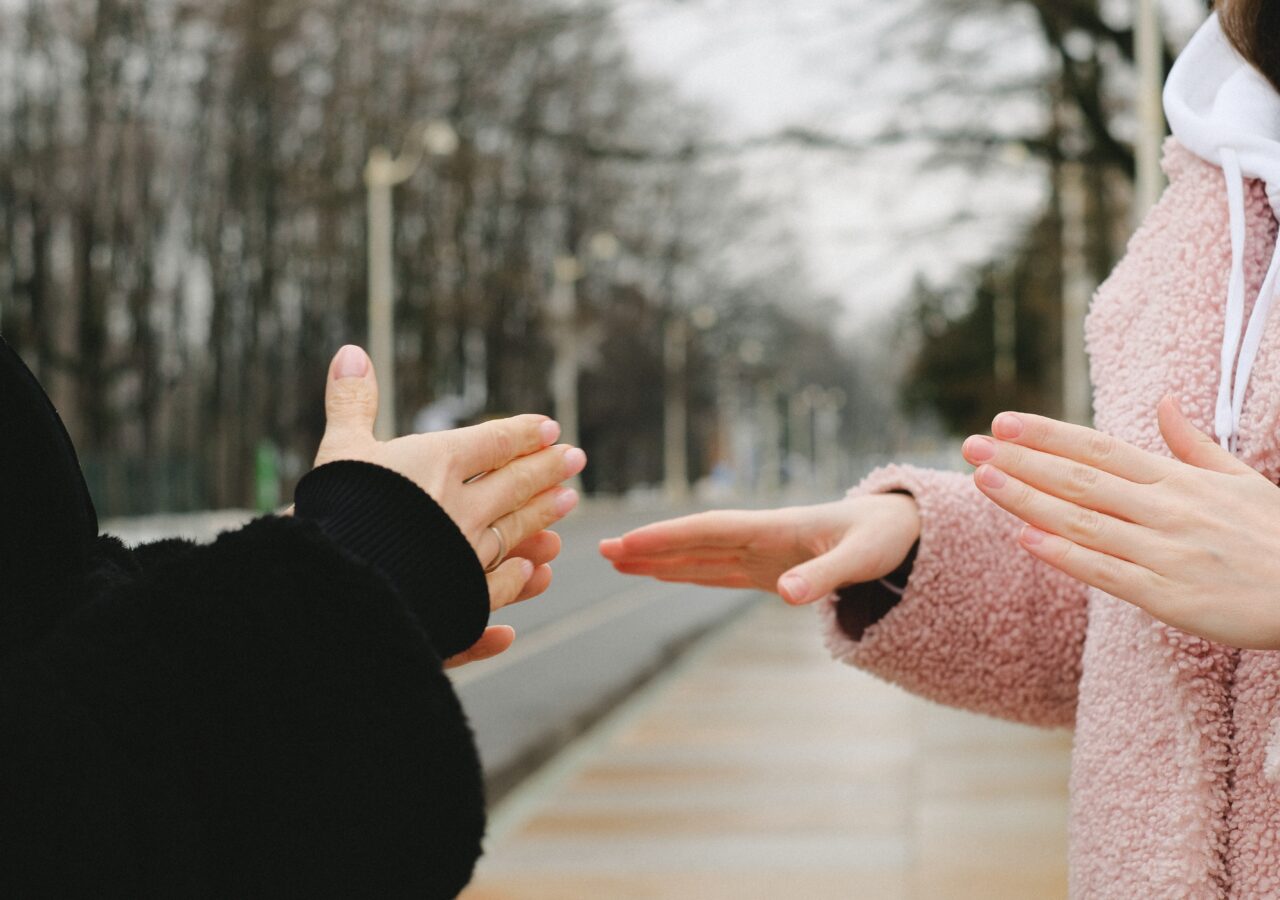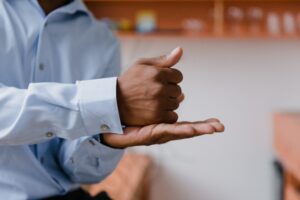BSL has taught me a different way of communicating that is as rich and complex as spoken languages

Maliha is a British Sign Language signing supporter in London.
Maliha facilitates deaf people’s access to the hearing world with signed support through live interpreting of lectures using British Sign Language. She first started learning sign language in 2013 but didn’t pursue it actively until 2018, when she started volunteering with signing support within the community.
As part of Deaf Awareness Month in September, Maliha explains how she got into this role and why.
1- What made you learn sign language?
I wanted to learn British Sign Language (BSL) because I was initially interested in it as part of my university Speech and Language Therapy degree – I love languages and this was one that was interesting to me and simultaneously helpful for my work. Then I was introduced to the deaf members of my community and mosque and soon realised what a valuable communication tool it is to share information and to have conversations with people I may not have previously been able to communicate effectively with.
2- How hard was it to learn?
It’s really not hard to learn British Sign Language! It is surprisingly easy to learn the signs as there are only so many handshapes you can make for words. What is trickier is then training yourself to use facial expressions and body language to give more context and meaning to the signed words – for example you can make the sign ‘big’ by just having your hands out straight, thumbs up, and moving outwards to create a wider space between your hands. But if you make that space even wider, you’re showing how big you mean, and with the addition of your facial expression to show awe with a bit of an eye squint and mouthing ‘woah’ – you’re saying it’s enormous!
3- What has learning BSL taught you?
BSL has taught me a different way of communicating that is as rich and complex as spoken languages. It has given me personal appreciation for communication as it has opened up opportunities and friendships for me that I would not have been able to have without knowing sign language.
It has also given me the opportunity to learn about deaf communities and culture and helped me understand what inclusion can and needs to look like and what I can try to do to make it happen in the smaller and wider communities I am a part of.
4- What sorts of things has your community (Stanmore) done to support the deaf attendees and participants?
Stanmore first gave me access to learning BSL by holding Level 1 classes at the mosque – this allowed not only me, but a cohort of us access to BSL that we could then take further to support access to Islamic information for our community members. They have held signed majalis for a number of years, only recently having these streamed alongside the lecturer for online access as well. They have also organised deaf ziyarat trips with full signing – and all of this is through a pioneering lady called Zehra Bai Khaku, to whom the Stanmore community is indebted for her work towards inclusion. We also started a Deaf class that I had the pleasure of teaching in at the Sunday Madressa where deaf students were taught about Islam in BSL, and later integrated into the mainstream classes with BSL signing to allow access to the teaching.
It makes me very proud to see what we have achieved so far as a community.
5- If someone is thinking about learning BSL, where do they start?
Level 1! If you are interested in a qualification, then have a look at ‘Signature’ accredited courses – these currently run both in person as well as online. If you are interested in learning signing but cannot commit to classes or a course, then go onto YouTube and watch some videos, copy them to start with, and find some time to practice with deaf people or with other friends who are learning!
If you liked this article – check out Tahera’s personal perspective as a deaf person. Tahera also shares some top tips for communicating with a deaf person to increase connection, inclusivity and mutual learning.

